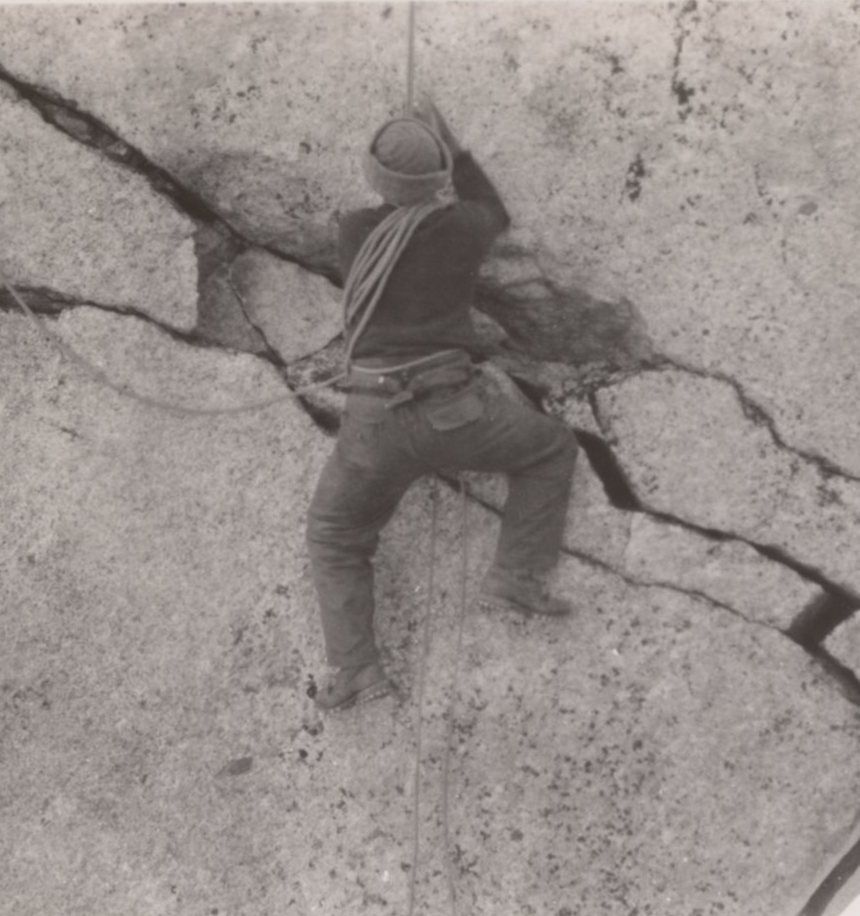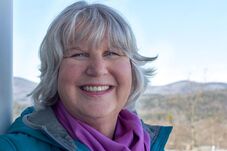 By Peggy Rosen Pull out a sepia-toned photo from the 1920’s of my Great-Aunt Bess. I’ll take delight in sharing the stories that have become family legend, about an adventuress ahead of her time. Equally comfortable on rock, snow, or ice, and as tough as her hobnailed boots, Elizabeth (Bess) MacCarthy became one of the most accomplished female climbers in North America. She scaled many peaks in the Canadian Rockies, making first ascents of formidable climbs such as Bugaboo Spire in 1916. In 1917, she climbed the challenging Mt. Hungabee, the first woman to stand on its summit. Show me an image of my college-aged-self suspended on a ropes course high in the treetops. The smell creosote-soaked timbers, sweat, mosquito repellant is overwhelming. The sound of the whistling wind takes me back to the wilderness camp in the heart of New York’s Adirondack Mountains –- an experience that influenced the course of my adult life. I might even tell you, with a grin, about seeing the hit movie that summer that everyone was raving about — “Star Wars – A New Hope.” Photos serve as a strong and effective trigger for memories. The immediate reaction of recognition and remembered experience can get us talking right away, prompting descriptive details that make a life story vivid. And beyond eliciting sensory specifics that enhance our story, the visual experience of a picture can take us down a reminiscence road full of emotions. Written personal stories and heirloom books frequently use photos to illustrate a narrative. Often, the initial step in a personal story project involves interviews with one or more story narrators who respond to questions posed by a personal historian. The personal historian assists the narrator in elaborating on their responses, then transcribes and organizes the information into narrative form. We may already have specific photos to incorporate into a final product, adjacent to the story text. At other times, after the story is written, we comb through photos to pick the best one that “goes” with the story. What if we turn this around and start with photos, before diving into story questions? This approach can be a fun way to launch life story sessions. In lieu of a list of questions, start with a sheaf of photos, or an album, or even stock photos of an era. The “photos first” strategy can be helpful for those who are having trouble deciding where to begin their memoir or life story project, or for personal historians working with reluctant narrators. Using photos as a memory prompter lends itself to “digging deeper” into the perspective of the viewer. The details that emerge in describing a picture and its backstory enhance discovery. Let pictures do more than sit beside story. Let them help tell it. To try working from a photo as a starting point, begin with these tips:
 Peggy Rosen came to personal history work in 2017 from a background in Nursing and Healthcare Administration. She focuses on written story, helping clients share their stories as books, legacy letters and in Guided Autobiography classes. She’s passionate about the potential for personal connections created by written life stories.
0 Comments
Your comment will be posted after it is approved.
Leave a Reply. |
PHNNWe are an organization of professional Personal Historians from the New England States. Categories
All
|
 RSS Feed
RSS Feed